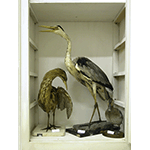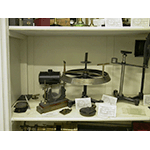Istituto "Calasanzio" ["Calasanzio" Institute]
The Institute derived from the first "Scuole Pie", inaugurated at Empoli in 1861, with an elementary school, an intermediate school and a night school for adults. To these were added, in 1870, a technical institute, a secondary school and a meteorological observatory, whose instruments have been dispersed. In 1880, the building currently occupied by the institution was constructed, and a boarding school was opened.
In 1889 the "Calasanzio" Boarding School was founded. In 1941, it took the name of "Calasanzio" Institute and became a state-recognised private school. That same year a scientific secondary school was opened, which still exists today along with a kindergarten, an elementary school and an intermediate school. From the time of its foundation, the Institute followed the great educational and scientific tradition of the "Scuole Pie", dedicating great attention to scientific-technical education, in the conviction that faith, science and literature should be integrated to provide the best education for the young.
Around 1946 the Institute received from the scientific cabinet of the Badia Fiesolana Institute, another Piarian institution, numerous scientific instruments and naturalist specimens, which form the main core of its historic collections. In 2000 it was awarded the status of state-recognised private school.
At present, the collection of educational instruments, which encompasses many sectors of classic physics (in particular, mechanics, thermology, acoustics, optics and electromagnetism), consists of around 250 pieces constructed by major Italian and European manufacturers, dating mainly from the 19th and early 20th centuries. The collection also contains pieces from earlier times and scientific instruments of great value and precision.
The naturalist collection, formed in the late 19th century for teaching purposes, is also important. It includes minerals and fossils, chemical substances, seeds, models of crystals and plants, as well as a good collection of stuffed birds.
****************************
Texts by Carlo Triarico
English translation by Catherine Frost
Last update 27/feb/2008





